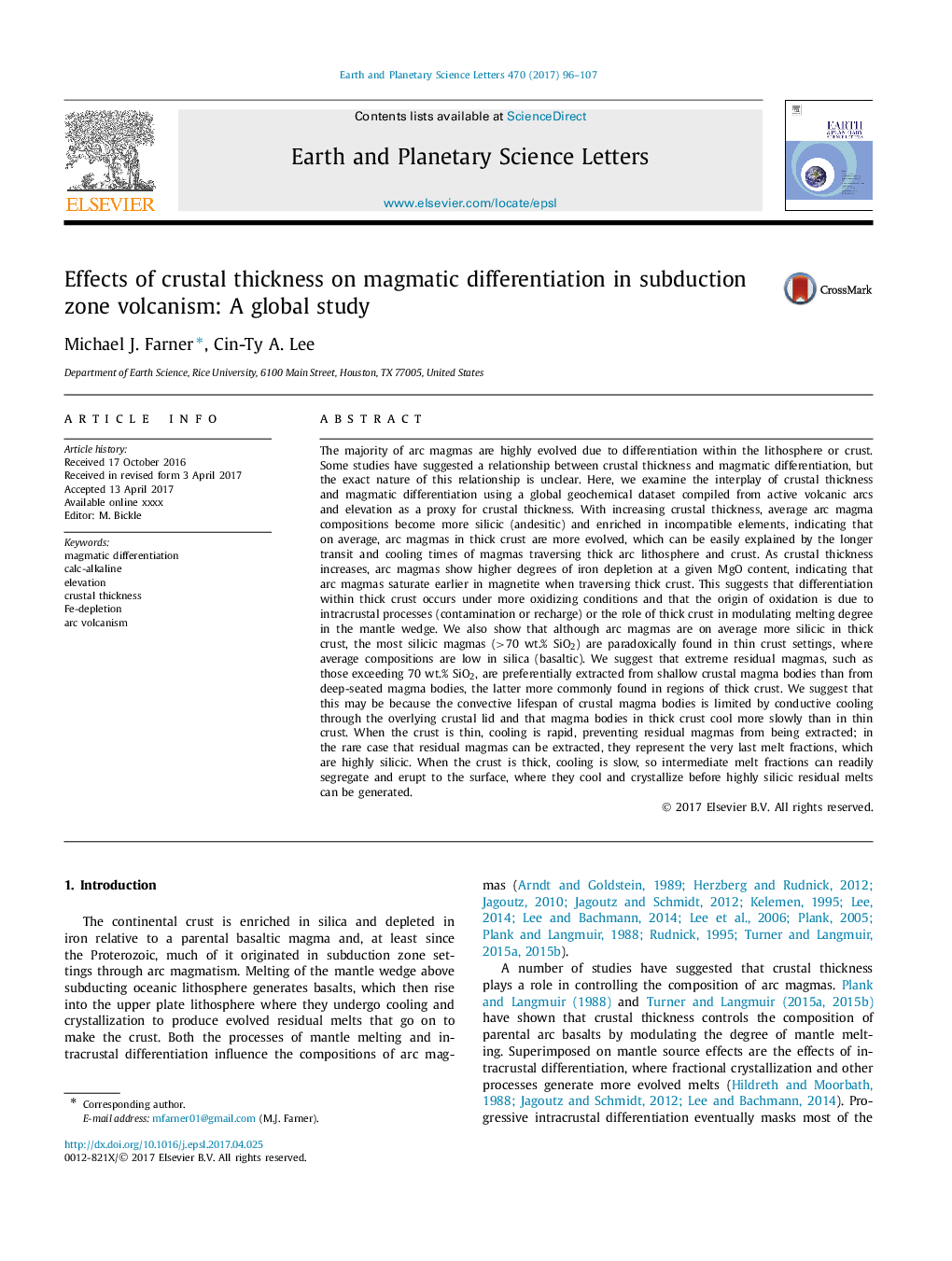| کد مقاله | کد نشریه | سال انتشار | مقاله انگلیسی | نسخه تمام متن |
|---|---|---|---|---|
| 5779624 | 1634686 | 2017 | 12 صفحه PDF | دانلود رایگان |
عنوان انگلیسی مقاله ISI
Effects of crustal thickness on magmatic differentiation in subduction zone volcanism: A global study
ترجمه فارسی عنوان
اثر ضخامت پوسته در تمایز مغناطیسی در آتشفشانی ناحیه فرابنفش: مطالعه جهانی
دانلود مقاله + سفارش ترجمه
دانلود مقاله ISI انگلیسی
رایگان برای ایرانیان
کلمات کلیدی
تمایز مغناطیسی، قلیایی قلیایی، ارتفاع، ضخامت پوسته، کمبود آهن، آتشفشان قوس
موضوعات مرتبط
مهندسی و علوم پایه
علوم زمین و سیارات
علوم زمین و سیاره ای (عمومی)
چکیده انگلیسی
The majority of arc magmas are highly evolved due to differentiation within the lithosphere or crust. Some studies have suggested a relationship between crustal thickness and magmatic differentiation, but the exact nature of this relationship is unclear. Here, we examine the interplay of crustal thickness and magmatic differentiation using a global geochemical dataset compiled from active volcanic arcs and elevation as a proxy for crustal thickness. With increasing crustal thickness, average arc magma compositions become more silicic (andesitic) and enriched in incompatible elements, indicating that on average, arc magmas in thick crust are more evolved, which can be easily explained by the longer transit and cooling times of magmas traversing thick arc lithosphere and crust. As crustal thickness increases, arc magmas show higher degrees of iron depletion at a given MgO content, indicating that arc magmas saturate earlier in magnetite when traversing thick crust. This suggests that differentiation within thick crust occurs under more oxidizing conditions and that the origin of oxidation is due to intracrustal processes (contamination or recharge) or the role of thick crust in modulating melting degree in the mantle wedge. We also show that although arc magmas are on average more silicic in thick crust, the most silicic magmas (>70 wt.% SiO2) are paradoxically found in thin crust settings, where average compositions are low in silica (basaltic). We suggest that extreme residual magmas, such as those exceeding 70 wt.% SiO2, are preferentially extracted from shallow crustal magma bodies than from deep-seated magma bodies, the latter more commonly found in regions of thick crust. We suggest that this may be because the convective lifespan of crustal magma bodies is limited by conductive cooling through the overlying crustal lid and that magma bodies in thick crust cool more slowly than in thin crust. When the crust is thin, cooling is rapid, preventing residual magmas from being extracted; in the rare case that residual magmas can be extracted, they represent the very last melt fractions, which are highly silicic. When the crust is thick, cooling is slow, so intermediate melt fractions can readily segregate and erupt to the surface, where they cool and crystallize before highly silicic residual melts can be generated.
ناشر
Database: Elsevier - ScienceDirect (ساینس دایرکت)
Journal: Earth and Planetary Science Letters - Volume 470, 15 July 2017, Pages 96-107
Journal: Earth and Planetary Science Letters - Volume 470, 15 July 2017, Pages 96-107
نویسندگان
Michael J. Farner, Cin-Ty A. Lee,
